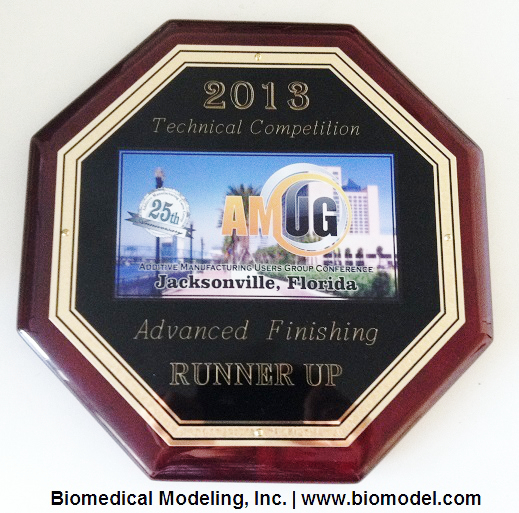| BIOMODEL.COM | Quick links: Order a Model | Request a Quote | Send Scan Data |

Publications and Case Studies
Some of the our cases have been featured in the press. The following are a few highlighted articles featuring our Biomodels. Click on the titles below for more information and links to related articles about each project.Case Summaries
( Click on images or scroll down for more information. ↓ )
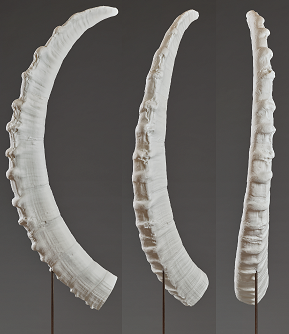 |
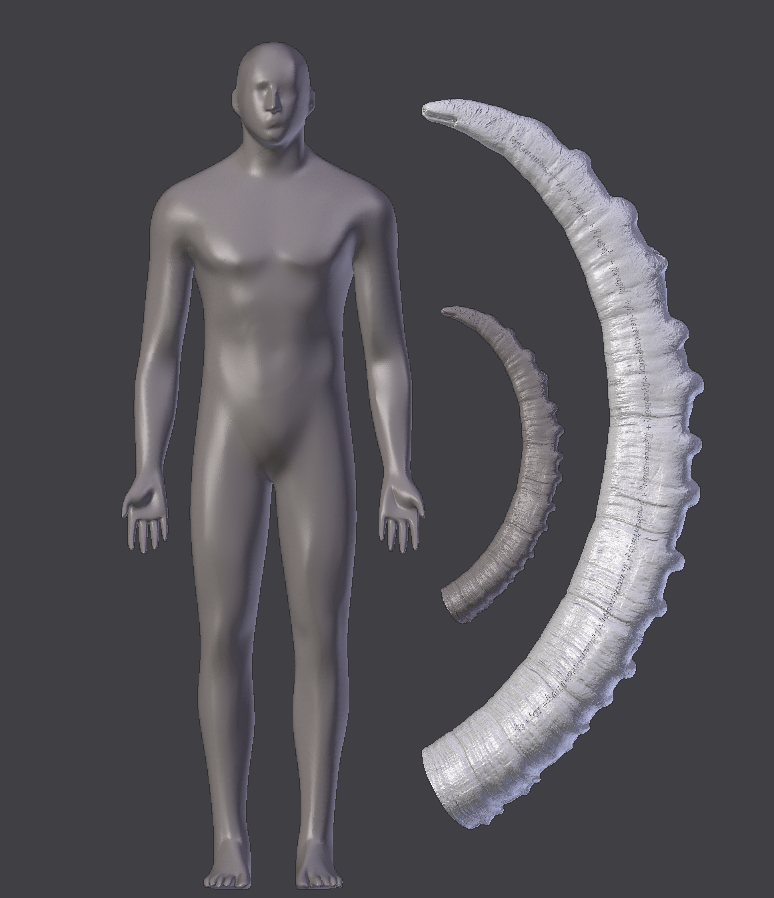 "Living Data" of the Ibex Horn BMI collaborated with Boston based artist Edward Monovich and the University of Zurich in a project combining art, biology, and 3D technology. |
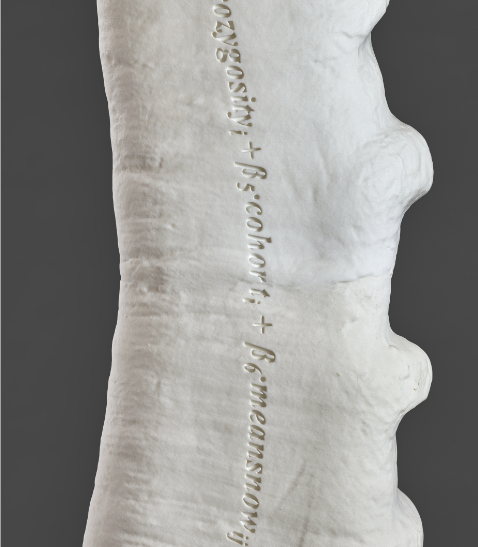 |
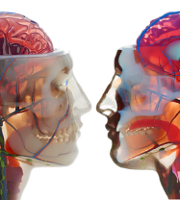 Biomodels featured in Full-Color 3D Printer Launch Stratasys Ltd.'s launch of the J750 polyjet printer featured some of our models including illustrative models of head, hand, and heart anatomy. The models employ multiple materials and wide range of colors. |
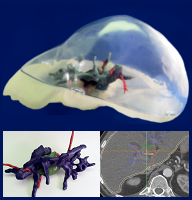 Biomodels for Improving Surgical Education and Clinical Practice |
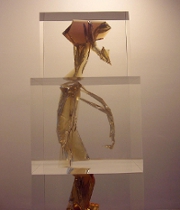 Blockman: A Work of Modern Anatomical Art BMI contributed to the production of Matthew Day Jackson's Blockman, a modern sculpture that features a tessellated version of the human skeleton. |
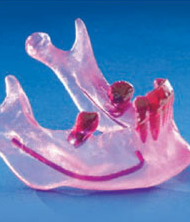 'Inside Dentistry' journal article The dental journal Inside Dentistry featured an article discussing the use of our models for visualizing, planning, and placing dental implants. |
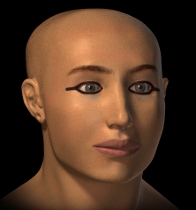 King Tut Revealed Using 1,700 CT images of King Tutankhamen's skull, BMI produced a digital reconstruction of the ancient pharaoh's face. |
 Conjoined Twins Separation |
Art & Science Collaboration: "Living Data" of the Alpine Ibex Horn 2017 - 2018. Biomedical Modeling Inc. is excited to have collaborated with Boston based artist and Massachusetts College of Art and Design professor Edward Monovich on his "Living Data" sculpture exhibited at the University of Zurich (UZH) Zoological Museum. The work features a 5-foot tall, dramatically enlarged, 3D printed replication of an Alpine Ibex horn.
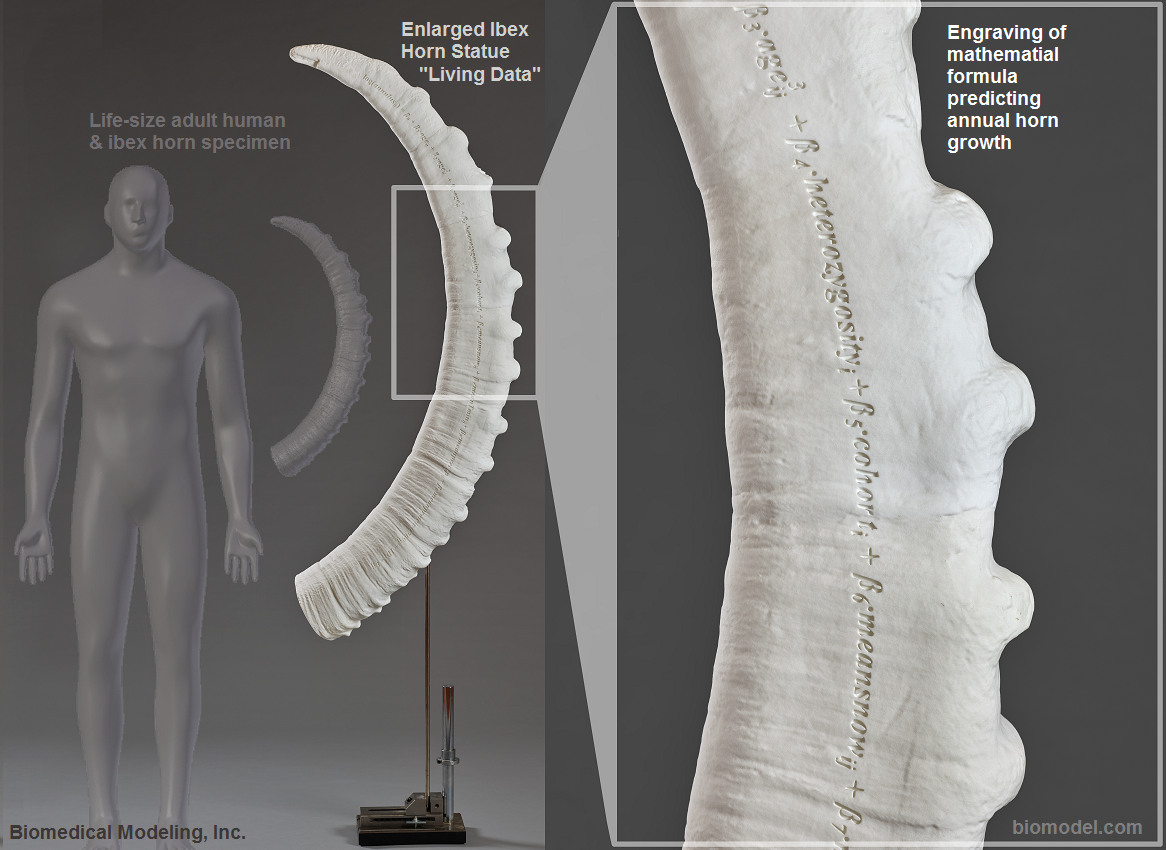 This work was produced as a collaboration between BMI, artist Edward Monovich, and two biologists Dr. Alice Brambilla and Dr. Lukas Keller. A high-resolution 3D scan of an original horn specimen was captured. The horn was then digitally enlarged, engraved, and segmented into a series of smaller components with mounting and joining features. These components were then 3D printed, finished, and assembled into the final 5-foot tall structure. 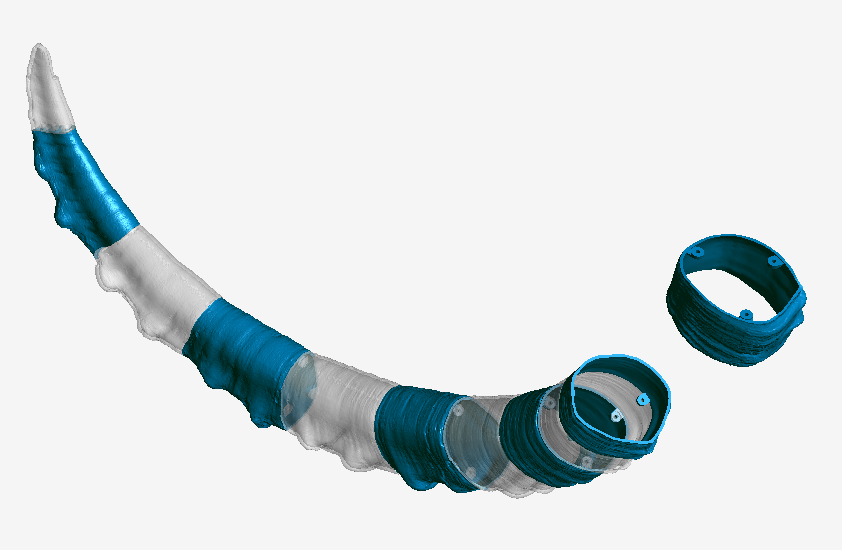
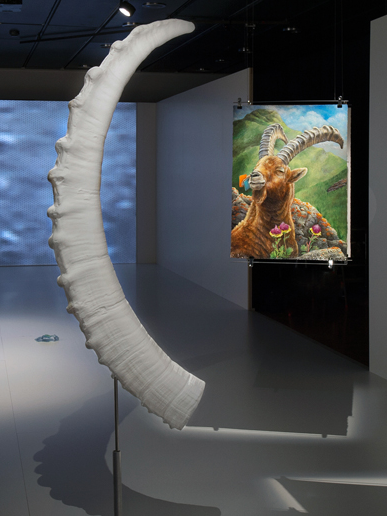
In September 2015, Edward Monovich and Dr. Lucas Keller first presented upcoming collaborations at Swissnex Boston, an international "science diplomacy" outpost in Cambridge, Massachusetts. The final art work was first exhibited in September - November 2017 in Zurich, Switzerland. In February 2018, Dr. Crispin Weinberg and artist Edward Monovich led a round-table discussion on this art, science, and technology collaboration project at the Transcultural Exchage Conference in Québec City, Canada. >> See more pictures of anatomical art in our Biomodel Gallery. Further reading: |
Biomodels in Stratasys J750 Launch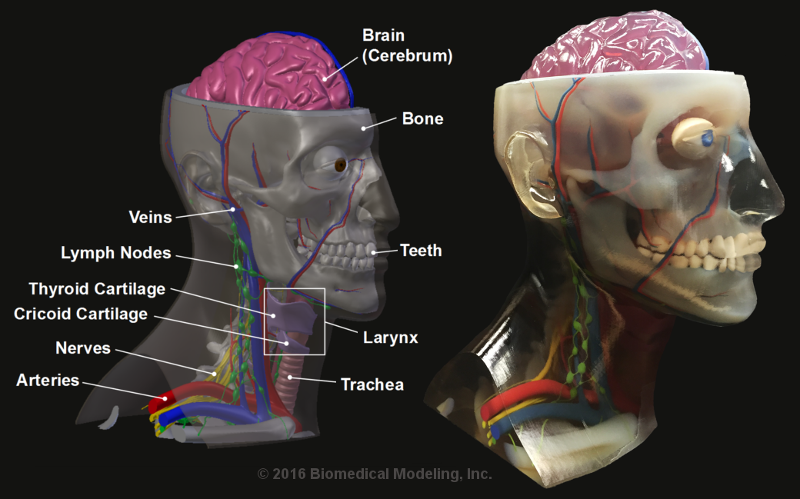 2016. Biomedical Modeling Inc. was asked by 3D printing giant, Stratasys, to design anatomical models for demonstrating the technical capabilities of its new J750 PolyJet 3D printer. It is the first high resolution 3D printer with full color (360,000 color combinations) and multiple materials. The printer can mix up to 6 materials including VeroClear and DigitalABS.
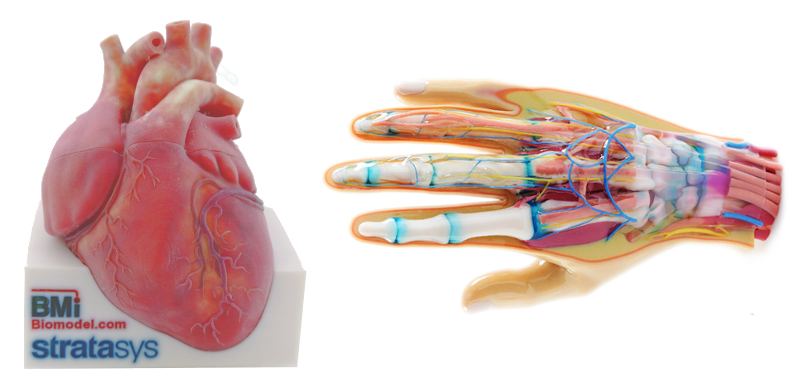
The head and hand models feature a range of colors used to highlight different biological tissues. Some of the models incorporate rigid opaque and rigid clear materials, while one hand model also features a flexible material on the model's skin layer. The split heart model assembly demonstrates the use of colored image textures printed on the surface of a rigid, acrylic-based model. >> See more pictures of these models in our Biomodel Gallery. Related articles in the press: |
Surgical Simulator for Spina Bifida Repair
2013. BMI worked with the University of Illinois, College of Medicine at Peoria to develop a medical simulator as a platform for training neurosurgery residents to correct the congenital spinal cord defect myelomeningocele (spina bifida cystica).
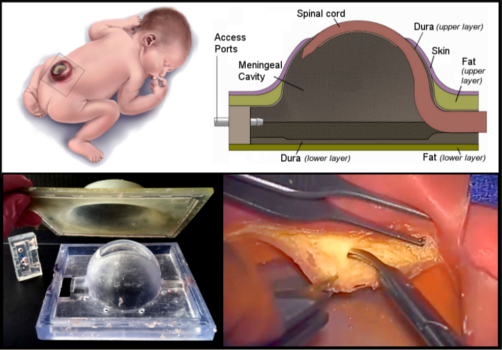 >> Learn more about bioodels for Healthcare Education & Training. Related articles and media: |
Biomodels for Improving Surgical Education and Clinical Practice2011-2015. BMI worked with Harvard Medical School and Beth Israel Deaconess Medical Center on a feasibility study looking at opportunities for using 3D printing to enhance surgical education and clinical practice. Biomodels were created with the aim of serving as an educational reference to pathologic anatomy, improving communication between surgeons and patients, preoperative planning, and as an interaporative reference to aid decision making during surgery. Two of the models created as part of this study. An academic article discussing this project were published in SAGE journal Surgical Innovation" ( vol. 23 no. 2 189-195 ).
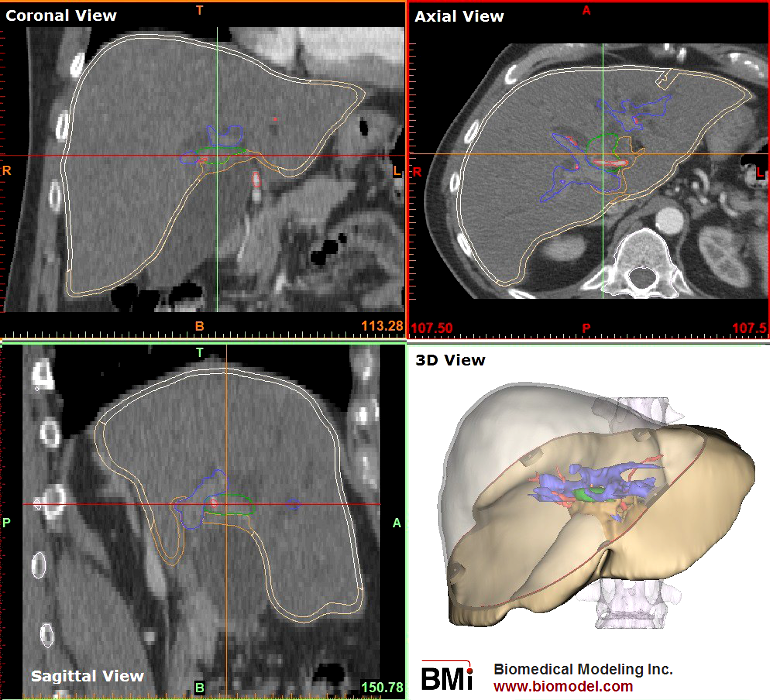 The superior liver parenchyma was made of a clear polished material for visualization. Meanwhile the lower half was semi-opaque with a flexible gasket to allow assembly and the insertion of the tumor-vasculature unit. BMI was awarded a runner up prize for this model in the Additive Manufacturing User Group's 2013 Technical Competition. The competition recognizes excellence in additive manufacturing applications and skill in finishing additive manufacturing parts. >> See more pictures of this model in our Biomodel Gallery.
|
Modern Anatomical Art: Matthew Day Jackson's Blockman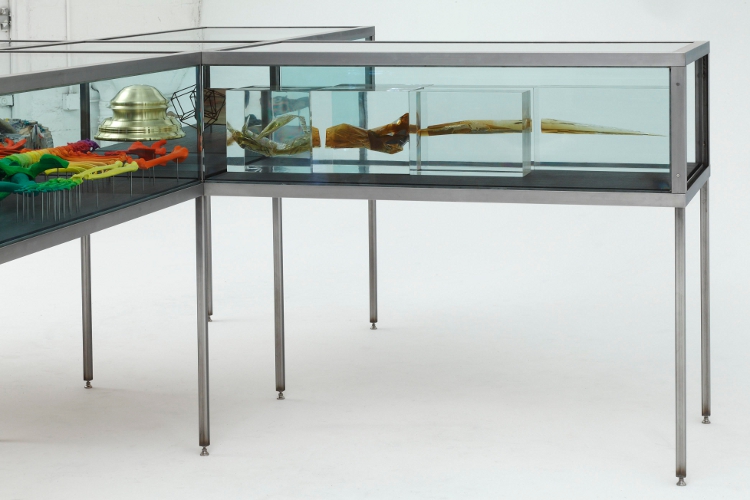 2010. BMI is always happy to work with modern artist Matthew Day Jackson in his various artistic ventures. Our most recent work with him revolved around the production of Blockman. BMI contributed to the production of sculpture piece which features a sharp-angle geometric rendering of the artist's skeleton built in rapid prototype epoxy material and embedded in lucite. Blockman was first on display among Jackson's In Search Of exhibit at the Peter Blum Chelsea Gallery in New York City. 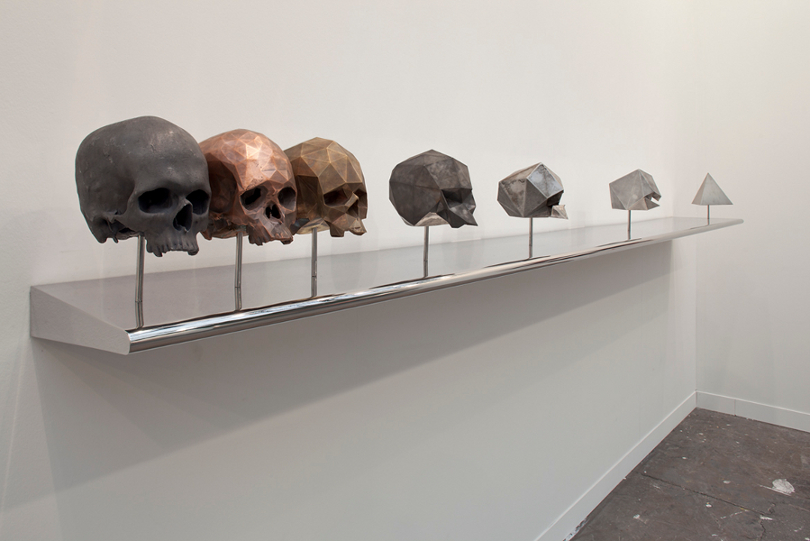 >> See more pictures of anatomical art in our Biomodel Gallery. Related articles in the press: |
Inside Dentistry Journal Article About Biomodels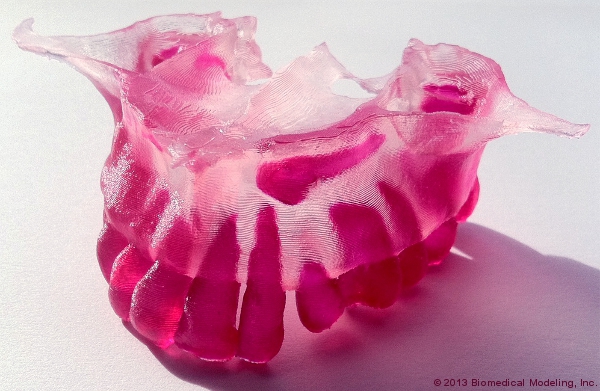 2006. Our BioDental models were featured in the dental journal Inside Dentistry. |
King Tut Revealed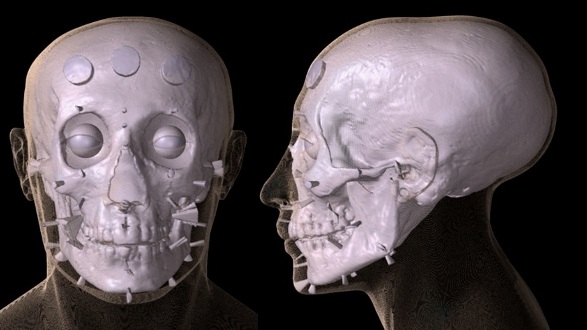 2005. A CT scan of Tutankhamen’s mummy was carried out in the Valley of the Kings by an all- Egyptian team led by Dr. Zahi Hawass, using a portable CT-scanner provided by the National Geographic Society and Siemens AG. The fragile body of the Pharaoh has lain undisturbed since it was last examined by Howard Carter in 1926, except for X-rays in 1978 and 1988. The CT-scan definitively disproved the popular theory that King Tut had been murdered by a blow to the head. Khaled El-Said of Biomedical Modeling Inc led one of the three teams asked to reconstruct King Tut’s face. While the other teams used traditional methods of clay sculpture and silicone casting, our team generated digital reconstructions directly from the 1,700 CT images. After separating bone and dry skin structures in the CT scan, computer-generated 3D reconstructions were made of Tutankhamen’s skull. The Pharaoh was classified as Caucasoid using forensic anthropology techniques, including craniometry. Skeletal and dentition development suggested he was 17-18 years old. Tissue depth markers were placed on the 3D skull to provide guidance for virtual reconstruction of his face. These facial reconstructions were made possible with the help of the Graphic Arts Unit of the Boston Police Department. 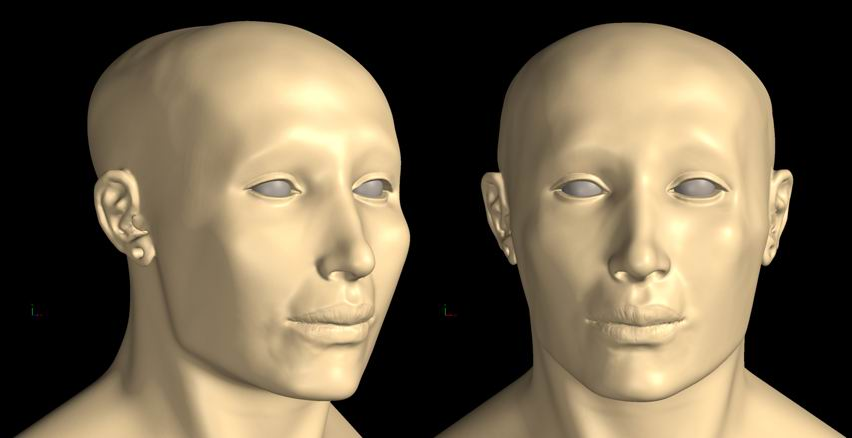 Related articles in the press: |
Separation of Conjoined Twins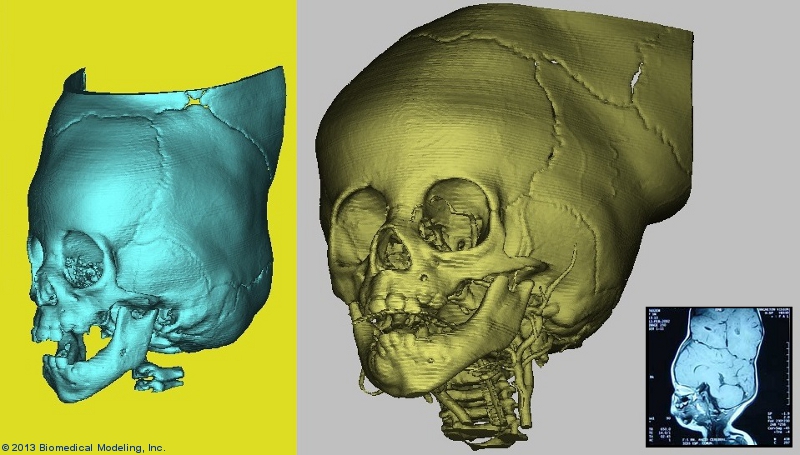 2002. In the summer of 2002, BMI undertook a most unusual and exciting case - the separation of conjoined twins from Guatemala, Maria Teresa and Maria de Jesus Quiej Alvarez. They were craniopagus twins – joined at the head – and were separated at UCLA on August 6 in a challenging operation. BMI contributed three Biomodels to UCLA for the girls. UCLA and Healing the Children are donating all of the surgical and medical care. This project pushed the limits of modeling technology in that surgeons wanted both bone (hard tissue) and blood vessels (soft tissue) reproduced together in each Biomodel. One Biomodel was made of each of the twins' skulls, which could be studied separately or combined to provide the surgical team with a replica of the conjoined anatomy. The third Biomodel showed the region where the twins were joined, enabling the surgeons to easily see the architecture of arteries and veins. 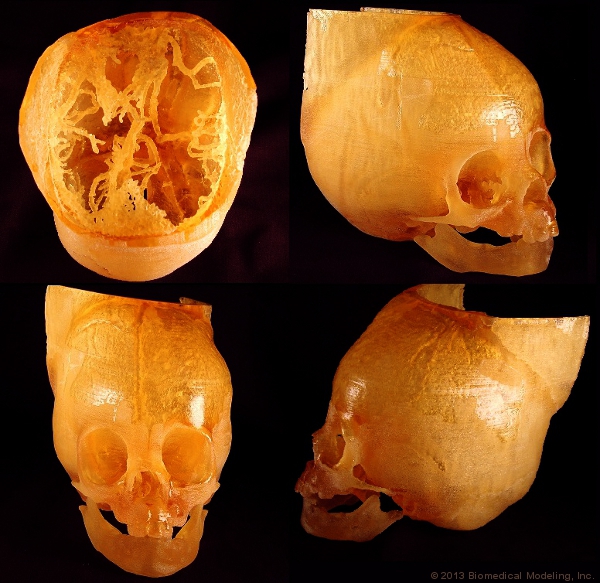 The surgical team, headed by Drs. Henry Kawamoto and Jorge Lazareff, included more than 50 medical professionals. BMI’s Biomodels facilitated communication among the members of the team. The plastic surgeons used the Biomodels to plan the separation of the skulls and how to cut skin flaps to cover the girls’ brains. The neurosurgeons used Biomodels in planning the delicate reconstruction of the blood vessels so that each girl ended up with her own complete circulation. Biomodels played a key role in the rehearsal of the surgery and were taken into the OR for consultation during the procedure itself. Dr. Kawamoto felt that the Biomodels had been so valuable that he even called BMI the same day he completed the 23- hour operation. Maria Theresa and Maria del Jesus are living at home with their family, and growing to be two beautiful, happy children babbling, eating and playing quite normally. 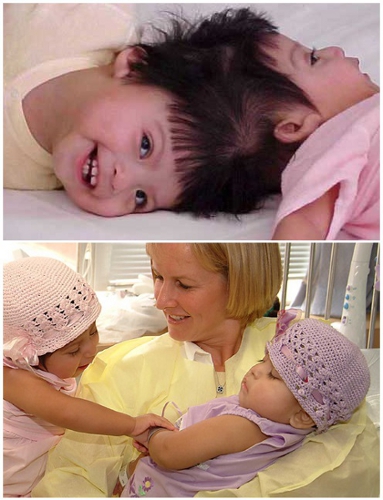 Related articles in the press: |
